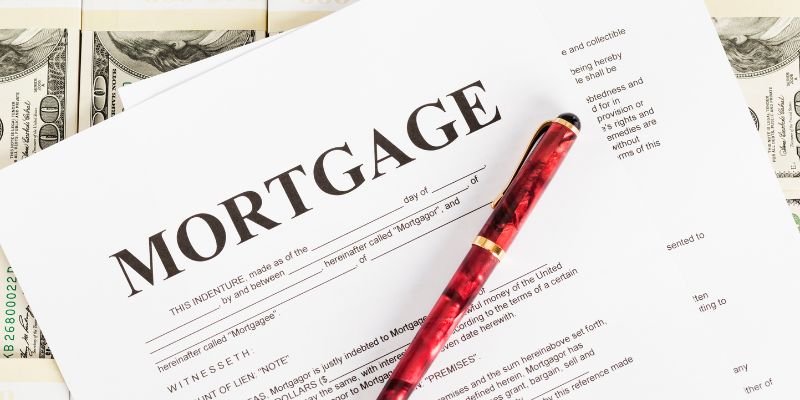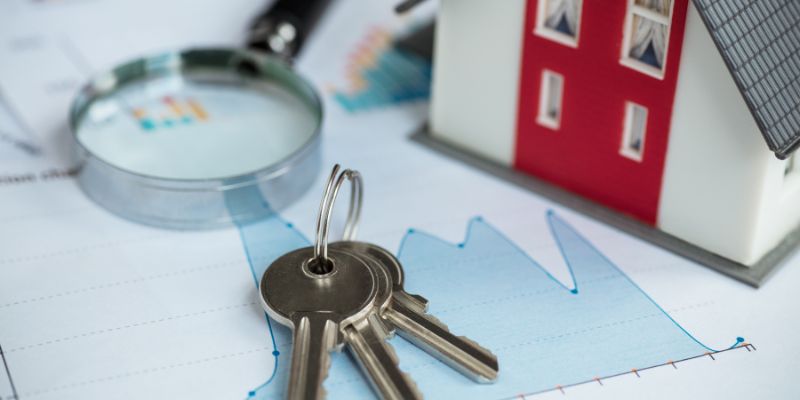The property secures the mortgage through a lien, and the first mortgage is the strongest possible. A mortgage loan is used to pay down payment or closing costs for a piece of real estate while using the property as security.
The lender will always have something to fall back on if the loan is not returned, regardless of the cause. If the borrower fails to make their payments, the lender always has the right to sell the property to reclaim the balance of the loan and any interest accumulated.

What Is A First Mortgage?
The initial house loan taken out is known as the "first mortgage." When you get a mortgage, the bank or other lending institution becomes the first lienholder on the property. It provides the lender the right to make the first claim on the home if you cannot make your mortgage payments.
If more creditors have a lien on your property, those creditors will take a back seat to the initial mortgage creditor. When a mortgage is refinanced, the new mortgage takes the place of the previous one in the "first mortgage position."
It is essential to distinguish that the first mortgage is not always the first loan the borrower obtains to purchase their first property. Instead, it refers to the first mortgage obtained for any given home.

How Does It Work?
A first mortgage is a loan often used to pay the cost of acquiring a piece of real estate. Nevertheless, the sort of first mortgage you receive will determine whether or not you are required to make an initial payment (also known as a "down payment") equal to a certain percentage of the total cost of the property.
The subsequent action is to take on the duty of being responsible for making regular payments on the mortgage. These payments often include a part of the total amount you borrowed in addition to the interest, property taxes, and homeowners' insurance that are payable on the loan. Your payments will continue to be used in this manner until the loan has been fully repaid.
Getting A First Mortgage
It is not required that you have never owned a home before applying for a first mortgage. Loans with low or no interest rates, grants, and help with the down payment are some of the perks available if you meet the requirements. These rewards can add up to significant savings over time.
You can meet the requirements if it has been more than three years since you have had a primary house. Even in neighborhoods earmarked for revitalization or second-time homebuyers, there are initiatives designed to help first-time buyers get a foot in the door financially.
It's vital to research ahead of time, based on your location, what kinds of assistance are available for a first mortgage. First-time homebuyers are the most typical borrowers of first mortgages, albeit this does not imply that this is the borrower's first real estate transaction.
First Mortgage Characteristics
If you want a mortgage loan, you'll need to sign a promissory note, a legal document stating you pledge to pay back the loan according to the terms outlined in the note. A mortgage deed is also signed, which grants the lender a legal claim to the property.
In the event of failure or non-repayment of the loan, the lender may sell the collateral as stipulated in the promissory note. The lender would first claim the property if the borrower fails on a first mortgage. He is entitled to be repaid in full before any other lenders on the same property are repaid.
Second mortgage lenders can use the property only once the original mortgage lender is completely pleased. It demonstrates that the risk to lenders is reduced with a first mortgage compared to other mortgages.
What Is A First Lien Mortgage?
The term "lien" describes any enforceable claim against an asset. The home you buy is security for the mortgage you take from the bank. The process involves filing a lien against your property. Common names for this sort of lien include main lien, first mortgage lien, and first lien.
Foreclosure is the process through which a lender recovers losses on loan by taking possession of the borrower's property, selling it, and using the proceeds to pay off the debt incurred by the borrower. To the extent that there is more than one lien on the property, the proceeds from its sale will be divided as follows: to the holder of the first lien, then to the holder of the second lien, and so on.
Mortgage refinancing and first-lien mortgages are the two types of loans that may be obtained via Better Mortgage. Therefore, if you already have a second mortgage, you won't be able to refinance it through Better Mortgage until you combine your debt or move it below the priority level of the first mortgage.
First Mortgage Vs. Second Mortgage
Both first and second mortgages share two characteristics: they enable borrowers to pay for the purchase of a home and use the property as security. There are, nevertheless, important differences between the two ideas.
Those looking to purchase a home should have a firm grasp on what sets each kind apart. The two main interest rate categories for a first mortgage are fixed and variable. Home equity loans have a set interest rate, whereas home equity lines of credit often have a variable interest rate.
Conclusion:
The first mortgage holder receives a lien on the property, not a legal title. The borrower may do what he likes with the property, but he will need the lender's permission to sell it or otherwise transfer it.
In most cases, the borrower does not require the approval of the primary mortgage lender to get the secondary mortgage. The secondary mortgage lender, however, will always require some guarantee that the borrower has sufficient equity in the property. In the event of nonpayment or default, their interest will be safeguarded in this way.

How to Lock Your Credit in Just Minutes - The Ultimate guide!

Can Two Household Heads Share an Address?

How Do Regular Pension Payments Differ From Lump-Sum Payments?

What Does Reddit Do

How to Join a Group of Angel Investors

The Enterprise Ethereum Alliance: What It Is, What You Can Do

What's Mobile Check Deposit? Can You Explain How It Operates?

What Is The Difference Between Deferred Compensation Plans And 401(k)s?

The Best of Both Worlds: The Ultimate Guide to Certified Fund Specialists (CFS)

What to Do If You're Listed in ChexSystems and What to Know

5 The Best Ways to Help Family Members in Financial Trouble in 2023
